A selection of the best, delicious and sweet varieties of honeysuckle to grow in different regions
The main qualities that pay attention to when choosing a variety of honeysuckle are yield, taste and ripening time of fruits, adaptability to climatic conditions. Experienced gardeners recommend evaluating other properties: pollination characteristics, fruiting stability, the degree of shedding, and the transportability of berries. We will tell you which honeysuckle is the sweetest and tastiest and which varieties are suitable for growing in different regions of Russia.
The content of the article
Top best varieties of honeysuckle, regardless of parameters
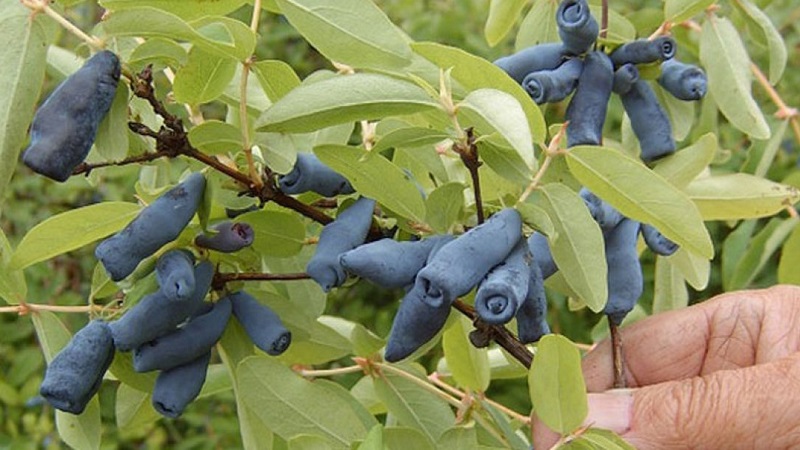
The list of the best includes varieties that have long established themselves in domestic breeding and have received recognition from gardeners.
Amphora
The bush is dense, compact, no more than 1.5 m high, has a decorative appearance. The variety is mid-season, quickly enters the fruiting period. Possesses good frost resistance and immunity to pests. The yield depends on the growing conditions - about 2 kg. Large berries ripen together, crumble weakly, have a sweet and sour taste.
Daughter of a giant
The bush is oval, high - up to 1.7 m. This is a large-fruited variety with sweet and sour, slightly crumbling fruits. Berries are high-quality raw materials for processing and freezing - they tolerate transportation and storage well. The variety is resistant to winter frost.
Bazhovskaya
A wide, tall shrub - up to 2 m - tolerates drought and cold. The variety is early ripening with an average yield of about 1.5 kg. The berries are medium in size, sweet, without bitterness. The disadvantages include significant crumbling.
Volkhova
A tall (up to 2 m) oval bush with good decorative qualities tolerates temperature drops well. The berries are large, up to 2 cm long, crumbling slightly. The taste of the fruit is sweet, there is no sourness, the pulp is juicy with a strawberry aroma.
Swan
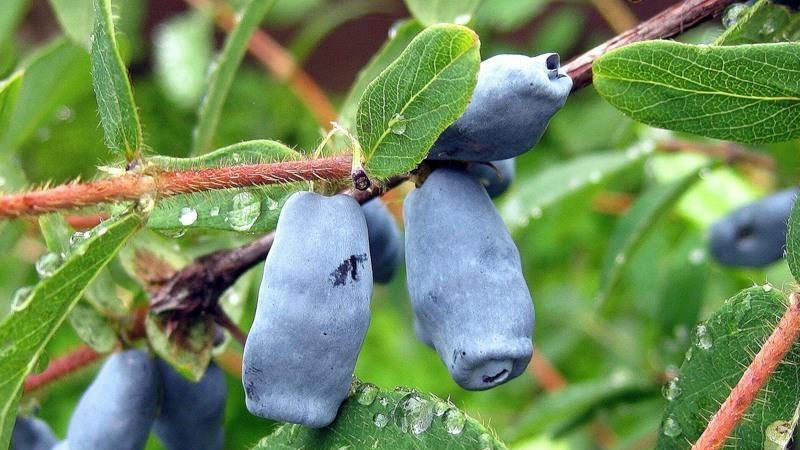
The vigorous shrub is highly decorative, hardy and winter-hardy. Berries of medium size ripen early (in the first ten days of June), crumble weakly. Sweet fruits with a pleasant smell tolerate transportation well. Productivity - up to 2.5 kg.
Dessert
Sprawling bush of medium size, mid-ripening. Large sweet berries (up to 2 g) ripen together, have a slight pleasant sourness, are well stored and transported.
Lapis lazuli
Medium spreading shrub up to 1.7 m high resistant to frost and most pests. The plant is partially self-fertile with minimal fruit shedding. The length of the berries is up to 2 cm. The pulp has a fibrous structure and a good dessert taste.
Altair
A dense, spherical, ornamental bush grows no higher than 1.5 m. It is unpretentious, resistant to temperature changes, diseases and pests. Differs in early maturation, yield - up to 2.5 kg. Berries are medium in size (up to 1 g), juicy, sweet taste, slightly tart.
Yugan
Bush up to 1.5 m high, with a thickened crown. Belongs to the group of mid-season honeysuckle. Differs in stable fruiting every year, excellent yield (up to 5 kg) and low shedding.The taste of berries is sweet with a pleasant sourness, the fruits are highly transportable.
Delight
The width and height of the shrub is 1.7 m. It is distinguished by good winter hardiness, resistance to pests and diseases. Honeysuckle refers to large-fruited, ripens early and amicably, weakly crumbles. The fruits are fragrant with a sweet and sour taste, there is no bitterness. The crop is stored for a long time, well transported.
Blue spindle
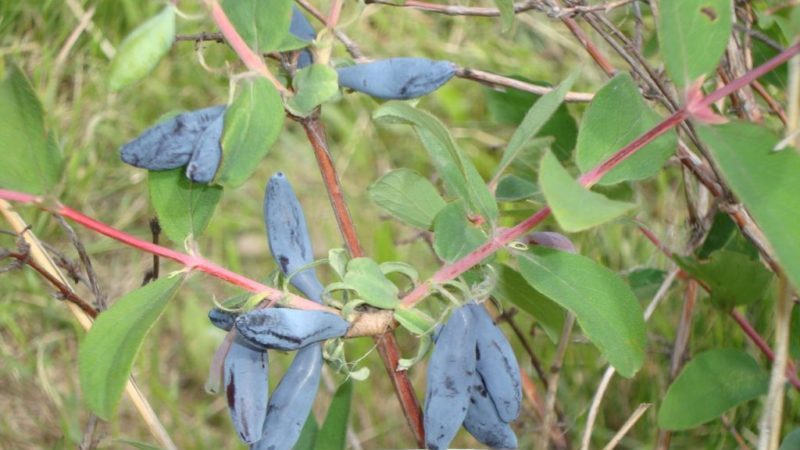
Oval upright bush resistant to temperature changes and pests, early fruiting. The length of the fruit is up to 2.8 cm, the berries are sweet with a pronounced sourness. Differs in stable fruiting every year and good yield.
What is the best honeysuckle in taste and size
Edible honeysuckle varieties are grown for the sake of harvest. Therefore, the taste of berries and their size are the most important characteristics when choosing a variety for planting on the site.
The sweetest and most delicious
Bakcharskoye varieties (bred in the Bakcharskoye gardening nursery) have excellent taste. Berries are universal: they can be consumed fresh and as a raw material for processing fruits and making desserts, jams, compotes, juice, jelly and wine.
Consider the sweetest varieties of honeysuckle.
Siberian
Characterized:
- early ripening;
- high yield (up to 3 kg);
- large fruits (more than 2 cm);
- stable annual fruiting.
Sibiryachka berries are covered with a thin skin and have a very sweet taste. Ripen amicably, easily separated from the stalk, do not crumble.
Silginka
Characterized by:
- early and amicable ripening (June - early July);
- medium and high yield (from 1.5 to 3 kg);
- large fruits (up to 2 g).
The berries do not crumble for a long time, do not have a characteristic bitterness. Their skin is practically not felt in the mouth, the pulp is very juicy, with a pleasant aroma.
Roxanne

Characterized by:
- large-fruited;
- late ripening (mid - late July);
- high yields (about 3.5 kg);
- medium crumbling.
According to connoisseurs, honeysuckle of this variety one of the most delicious. She has a very thin skin, a sour-sweet taste, leaving a subtle strawberry aftertaste, a fibrous consistency of the pulp (rare for honeysuckle).
The largest
The largest varieties of honeysuckle have berries weighing from 1.2 to 2.14 g. These include:
- Moraine. Early maturing variety. The berries reach 3 cm in length and about 1 cm in diameter. The skin and consistency of the pulp are tender. Dessert taste, sweet and sour, without bitterness.
- Provincial. Late ripening. The average length of the berries is 3 cm. The taste is very high. The fruits are tender, fragrant, sweet and sour. There is a subtle bitterness.
- Commonwealth. Mid-season variety. Length of berries - up to 3 cm, weight - up to 1.3 g. The pulp is tender, melting in the mouth. The taste is refreshing, sweet with sourness and citrus bitterness.
Varieties without bitterness and sourness
Most varieties of honeysuckle have qualities such as sourness and light bitterness. However, breeders have bred plants with fruits that do not have these flavors:
- Slav... The berries are distinguished by their strong aroma and sweet taste.
- Daughter of a giant... The fruits have a pronounced sweet taste with a very slight acidity.
- Amur. The fruit has a sweet sweet taste and strong aroma.
The best varieties for ripening speed
Despite the fact that different varieties of honeysuckle bloom at almost the same time, they have different ripening times. Fruiting times vary from early June to mid July.
Early ripe
These representatives of culture ripen in mid-June. Among the early maturing, the best are:
- Assol. An elite variety with a dessert taste and the highest tasting characteristics.
- Bakchar giant... Large-fruited honeysuckle, fruit pulp of a delicate consistency, juicy, sweet.
- Caramel. Harvest variety (about 3 kg), sweet berry taste.
Mid-season
Mid-ripening plants are those whose fruits ripen in the second half of June:
- Long-fruited. It is prized for its spicy sweet and sour aftertaste.
- Lenita. A large-fruited species characterized by a sweet taste with refreshing sour notes and a slightly tart aftertaste.
- Souvenir. It is characterized by a lack of aroma and pronounced sourness.
Late ripening
The berries of these species ripen in the first half of July:
- Berel. Plants are characterized by high productivity (up to 4 kg).
- Enchantress. Differs in stable annual fruiting and tart berry flavor.
- Zest. The pulp of the fruit is fibrous, aromatic, with a high tasting rating.
Ripening dates may slightly shift depending on the region and growing conditions.
The best varieties for different regions
Climatic conditions affect the yield of honeysuckle and the taste of the fruit. Breeders have developed various varieties that have proven themselves well in various regions.
Moscow region and middle lane
The varieties of honeysuckle recommended for these conditions have tall, powerful bushes and large fruits with high taste and a rich vitamin composition:
- Fast-growing. It is characterized by early ripening, large fruits and no bitterness.
- Antoshka. New generation variety. The bush is of medium height, the berries have a sweet and sour taste.
- Kingfisher. Frost and disease resistant variety with large, tasty fruits. Slightly crumbles, the berries tolerate transportation well.
Siberia
For cultivation in Siberia, breeders have bred varieties that are winter hardiness:
- Gerda. Good yield (on average - about 2 kg), berries are high in vitamins.
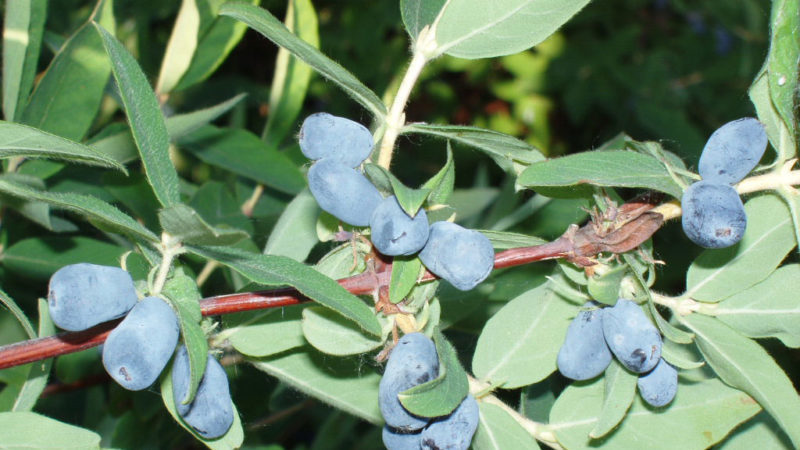
- Cinderella. Stable yields and resistance to adverse weather conditions.
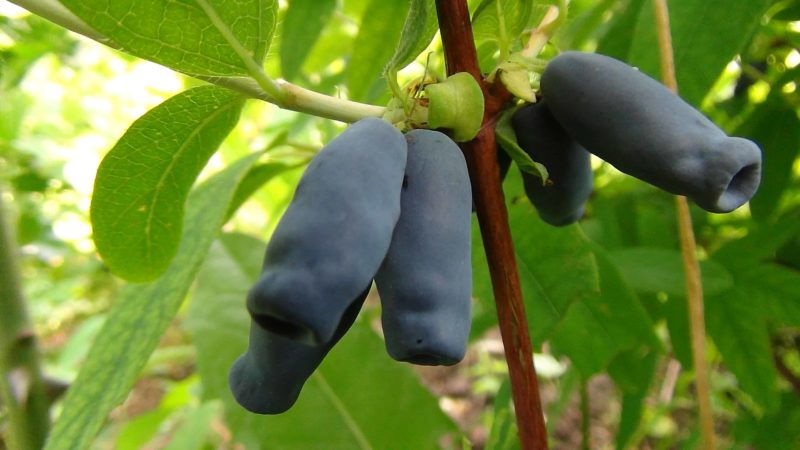
- The pride of Bakchar. In addition to its high winter hardiness and yield (up to 4 kg), the variety stands out for its good taste.
Ural
The varieties recommended for cultivation in this region are characterized by a height of up to 1.5 m, an average yield and a sweet taste of berries with a characteristic light bitterness (Fianit, Sineglazka, Lenita).
Southern regions
In the southern regions, varieties are grown that are well adapted to the arid climate:
- Violet... Ripening period is average. Tight, slightly fibrous pulp, pleasant aroma and sweet and sour dessert taste.
- Silginka... Low spreading shrub, medium-sized berries with a pleasant refreshing taste.
What other criteria to choose a variety of honeysuckle
Experienced gardeners also name other criteria that should be considered when choosing a variety:
- Productivity. Experts advise choosing varieties with high or medium yields - from 1.5 to 4 kg per bush (Sibiryachka, Roxana, Caramel).
- Stability. Preference is given to varieties that can bear fruit annually (Sibiryachka, Volshebnitsa, etc.).
- The ability to self-pollinate. There are few such varieties of honeysuckle, so you should pick up several varieties that are inter-pollinated. For example, Lazurnaya is a good pollinator for the widespread varieties of Blue Spindle, Bakcharsky giant, Cinderella, and Morena is the best option for Bluebird, Long-fruited, Leningrad giant.
- Transportability. The fruits of such plants are distinguished by dry separation and a large amount of P-active substances (Berel, Leningrad giant, Violet).
- Resistance to diseases and pests (Long-fruited, Fire opal, Jubilee).
- Weak crumbling. During the ripening period, the berries stay on the branches for a long time (Altair, Nadezhda, Nightingale, Souvenir).
Conclusion
The yield and taste of berries depend on the selection and growing conditions of honeysuckle. Therefore, when choosing a variety for growing on your site, pay attention to its main characteristics: adaptability to climatic conditions, resistance to diseases and pests, yield, size and taste of fruits, safety on the bush and keeping quality.